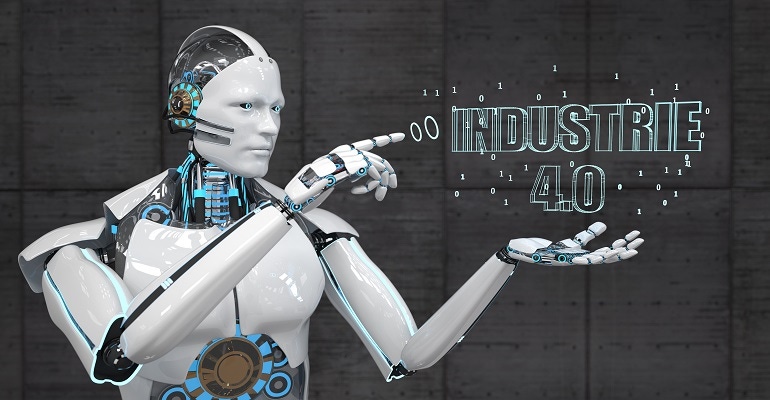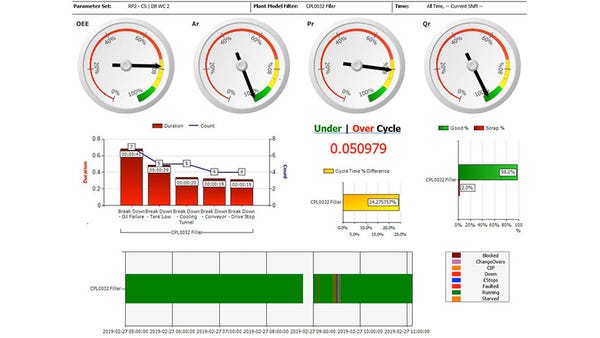After COVID-19, the “new normal” for manufacturers will be major progress toward digital manufacturing.
December 9, 2020

Life is getting very interesting for manufacturers during this pandemic. According to a McKinsey Global Survey of executives in October, companies have “accelerated the digitization of their customer and supply-chain interactions and of their internal operations by three to four years.” The report goes on to note that “the share of digital or digitally enabled products in their portfolios has accelerated by a shocking seven years.”
Here at Design News, we’re hearing the refrain over and over from manufacturers, vendors, and analysts: COVID-19 has significantly accelerated the move to advanced technology. “Manufacturers are set to experience five years of innovation in the next 18 months, as the current pandemic has demonstrated the need to adopt digital tools to automate processes, obtain real-time information, and create agile supply chains to comply with new restrictions,” Keith Higgins, VP of digital transformation for Rockwell Automation, told Design News. “Manufacturers must be agile and flexible to adapt to this ‘new normal’ in a COVID-19 world.”

Turning to Technology to Solve Manufacturing Difficulties
Manufacturers have been forced to innovate during this shutdown era. For many companies, that has happened fast. “As factories in highly impacted regions remain shut down and operating factories are forced to function with less staff to comply with social distancing requirements, manufacturers need to quickly adjust operations to accelerate production while keeping employees safe,” said Higgins.
The same technology that has enabled manufacturers to remain open during the pandemic looks to become core in a tech revamp that will likely continue after the pandemic passes. “Automation and remote technology such as augmented reality training are becoming critical technologies for manufacturers to implement to ensure social distancing guidelines are being met,” said Higgins. “Companies that are the furthest along in digital transformation will perform the best as we come out of the COVID-19 pandemic. These companies will return to the highest business level and have greater competitive advantage post-virus due to their more agile manufacturing environments.”
Older Tech Is Getting a Facelift
Even companies that already have robust technology are deploying new technology. “We’re seeing double-digit growth in our digital areas,” said Higgins. “Our investment in PTC lets us shift processing to the edge. Why is that happening? Too much data to move. We’re still working with MS quite a bit, but the cloud is adding on. That’s affecting decades-old control technology.”
Emerging technologies such as virtual and augmented reality are getting traction during this unusual time. “One of our oil and gas companies came to us to help with recruiting having to do with VR, AI, digital services,” said Higgins. “One of the tools is augmented reality expert capture, which uses augmented reality to have an experienced person do a maintenance task, record it, and have the procedure done by somebody who is young. They can follow this great precision and you can get the training done with great efficiency.”
Will Technology Solve the Age-Old OT vs. IT Issue?
In the past, the tension between the priorities of OT and IT was worked out through blended committees with representatives from each group. Guess what. That’s shifting to technology, too. “People have been talking about IT/OT integration for a while, but what does that mean? Now ThingWorx automatically determines what needs to be done,” said Higgins. “We’re seeing the analytical mashups, seeing data from OT and IT at the same time.”
Those applications will still require people in the workforce who understand the nature, the role, and priorities differences of OT and IT. “The final piece is the integration of deep OT data with automation tools,” said Higgins. “Anyone who understands IT and OT is going to have a long life of employment opportunities.”
OK, Boomer, Move Along – Tech Is Taking Over
Another refrain we’re hearing over and over is that the retiring knowledge worker won’t be replaced by a younger knowledge worker. Instead, technology will step in. “Technology is helping to fill the gap left by recent retirees. Making things more efficient,” said Higgins. “When something breaks, we don’t always know what went wrong. Going out with solutions once you identified the root cause, you can move from scheduled maintenance to predictive maintenance.”
Technology will also help manufacturers solve the ever-growing shortage of skilled workers. A workforce shortage plagues industries across the US. In manufacturing alone, there are almost 500,000 jobs open in September, according to the Bureau of Labor Statistics. “Deloitte identified that between 2018 and 2028 persistent skills shortage could risk $2.5 trillion in economic output for manufacturing,” said Higgins. “To solve these issues, manufacturing organizations look to digital transformation initiatives to empower their workforce and enhance efficiencies from the shop floor to the top floor.”
Remote Visits and Remote Working
COVID-19 has ushered in a world of remote visits and remote work. Companies are discovering there are significant savings in the shift away from travel and office space. “The pandemic has made the use-cases such as remote training, virtual site visits, and inventory observations a priority for many companies,” Edy Liongosari, co-chair of the Industrial Internet Consortium Thought Leadership Task Group and chief research scientist at Accenture Labs, told Design News. “These use-cases are expected to continue even after the pandemic, especially since all of the necessary infrastructure, equipment, training is already put in place because of the pandemic.”
Once the pandemic is over, companies will begin to evaluate what work can continue to be done remotely. They will want to make any savings permanent if possible. “The work that requires plenty of physical manipulations – such as warehousing – or needs to be operated in highly secured facilities will continue to be operated in those designated facilities. Others may adopt a hybrid or even a completely remote workforce,” said Liongosari. “The pandemic has certainly pushed the envelope of many companies to adopt remote working practices. We expect some percentage of this shift will continue post-pandemic.”
As all of these changes take place in one plant, manufacturers will likely extend the resulting savings and efficiencies at their other facilities. “We’re seeing an inflection point in digital transformation. Now it’s: ‘I have the first factory of the future going and we’re getting the ROI, and now how do I do it with six more plants?’” said Higgins.
Rob Spiegel has covered automation and control for 19 years, 17 of them for Design News. Other topics he has covered include supply chain technology, alternative energy, and cybersecurity. For 10 years, he was the owner and publisher of the food magazine Chile Pepper.
About the Author(s)
You May Also Like





